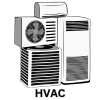Yes — engine and transmission technologies are among the biggest contributors to fuel economy improvements in both light-duty and heavy-duty vehicles. They help engines extract more useful work from the same amount of fuel and reduce energy losses during power delivery.
In this article, we discuss the following
- Engine Technologies That Improve Fuel Economy
- Transmission Technologies That Improve Fuel Economy
1. Engine Technologies That Improve Fuel Economy
- Higher Compression Ratios → Increase thermal efficiency (more work per unit of fuel).
- Direct Injection (DI) / High-Pressure Common Rail → More precise fuel delivery and better atomization, leading to more complete combustion.
- Turbocharging & Intercooling → Pack more air into cylinders for efficient combustion, especially at part load.
- Variable Valve Timing & Lift (VVT/VVL) → Adjusts airflow for optimal performance and reduced pumping losses across RPM ranges.
- Cylinder Deactivation → Shuts down some cylinders under light load, reducing fuel use.
- Friction Reduction → Advanced coatings, low-friction piston rings, and optimized lubrication cut mechanical losses.
- Waste Heat Recovery (WHR) → Uses Rankine cycles or thermoelectrics to turn exhaust heat into power.
- Hybridization with Engine Optimization → Keeps the engine operating in its most efficient range while batteries handle low-load conditions.
2. Transmission Technologies That Improve Fuel Economy
- Automatic & Dual-Clutch Transmissions (DCTs) → Faster, more precise gear changes than manuals, keeping the engine near its “sweet spot.”
- Continuously Variable Transmissions (CVTs) → Infinite gear ratios keep engines at peak efficiency, especially in smaller cars.
- Multi-Speed Automatics (8–18 speeds in trucks) → More gears = narrower RPM ranges per gear → better fuel economy on highways and grades.
- Automated Manual Transmissions (AMTs) → Widely used in heavy trucks; combine manual gearbox efficiency with automatic shifting.
- Downspeeding → Paired with high-torque engines and multi-speed transmissions, allows trucks to cruise at lower RPM → less fuel burned.
- Predictive/Smart Transmissions → GPS-linked systems anticipate terrain and traffic to optimize shifting and fuel use (common in modern trucks and buses).
3. Real-World Gains
- Passenger cars: Engine + transmission tech together can improve fuel economy by 10–25% compared to older designs.
- Heavy-duty trucks: Modern engines with advanced AMTs, downspeeding, and optimized shifting strategies can deliver 15–30% gains in fuel economy.
- Hybrid applications: Combining electrification with efficient transmissions can yield 40%+ savings in city driving.
Summary:
Yes — both engine innovations (better combustion, lower friction, hybridization) and transmission advances (multi-speed, automated, predictive) are essential for squeezing more efficiency out of internal combustion vehicles, especially as regulations tighten toward 2030–2035.
Other courses:



